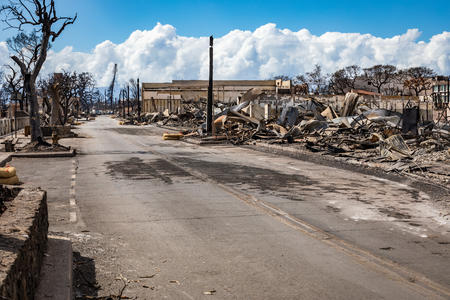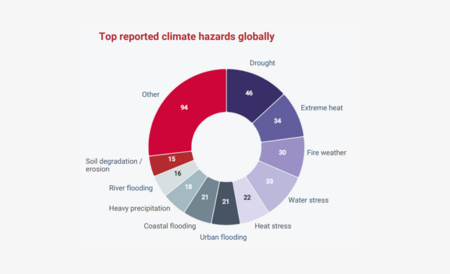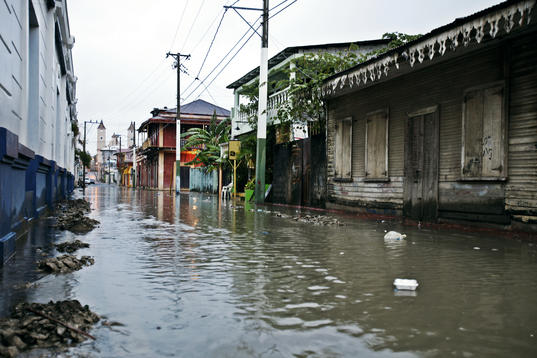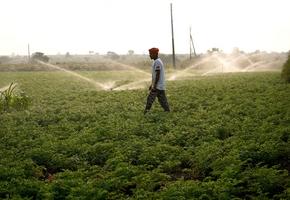World Water Week’s 2023 focus on the theme of ‘innovation at a time of unprecedented challenges’, ranging from poverty to biodiversity loss and climate change, is more urgent than ever. Climate change impacts, such as flooding, drought and water scarcity, are increasing in severity and urgent action is needed now.
Extreme weather
This month the US state of Hawaii has been in the news for all the wrong reasons. Warmer temperatures and decreasing precipitation driven by climate change have been drying out vegetation at an accelerated rate – making the wildfires there worse than they would otherwise have been, leading them to become among the deadliest in US history.

In early May, entire cities and small towns in the Emilia Romagna region of Italy were flooded. 14 people lost their lives after the area received more rain in 48 hours than in four months. Just a few weeks earlier though, it was an entirely different story: one of dry soil, parched waterways and water shortages. These droughts vastly exacerbated the floods that followed, with the earth too dry to absorb such a deluge.
A more uncertain world
Situations like these are playing out more and more frequently across the world, with the United Nations citing a “staggering rise” in extreme weather events over the past 30 years. January 2023 was the sixth warmest January on record in the United States. This was followed by one of the longest-lived tropical cyclones on record – Cyclone Freddy – which killed at least 400 people in Malawi and Mozambique.
This year, California, Somalia and Ethiopia all experienced similar patterns to Emilia Romagna, as did China’s Sichuan province in 2022 when thousands were evacuated. Wherever we look, governments now seem to be battling extreme drought, wildfires, melting glaciers or unprecedented flooding: all intensified by climate change and showing little sign of abating.
In one way or another, all these events link back to water: there’s either too little or far too much. While the Earth and its inhabitants depend on a reliable supply of water, climate change is chipping away at that reliability with devastating effect.
The role of state and regional governments
In 2022, 108 states and regional governments, representing 543 million people from 25 countries, disclosed their climate data through CDP. Of these, 81% said that they are facing significant climate hazards: demonstrating how global the impacts of climate change have become.

Regional governments and their local agencies play a crucial role in trying to manage extreme events and are often seen as ‘first responders’ to emergencies on the ground. In many cases they also have the power to implement laws and policies that can lessen the impact of such events or help communities to prepare better for them.
Lombardy and Emilia Romagna have already convened technical and political working groups to coordinate action and avoid future damage. Emilia Romagna is also working on a new Waters Protection Plan, to update measures approved in 2005, and is looking to address drought more broadly. This includes nature-based solutions that do not overly affect the landscape, such as small water reservoirs, and actions that use non-conventional sources such as reclaimed wastewater for crop irrigation.
Cross River State in Nigeria has embarked on an intensive planting regime to bolster degraded forest reserves. As well as increasing supplies of food and fuel, this has led to improved water security, watershed protection and a reduction in desert encroachment and outbreaks of wildfire. Similarly, many Indian states have been planting mangrove forests. Since 2010, the World Bank has supported the community-managed plantation of 20,000 hectares of mangroves across the country, providing a natural barrier to extreme storms.
Adapting to change and building resilience
So, states and regions are working on local solutions. But if more extreme and unpredictable weather is the new normal, there urgently needs to be more focus on building resilience and adapting to climate change alongside ongoing attempts to cut emissions.
CDP’s 2022 report highlighted what states and regions are already doing to improve things. Globally, states reported 245 adaptation actions being taken to address the implications of climate change. However, it's clear that every government, at every level, needs to go further and faster to face the current challenges – as well as those that are still to come.

There also needs to be a recognition that some countries, states and regions, are harder hit by climate change - and often those that have contributed the least to this situation. The UN estimates that developing countries will need $127 billion per year by 2030 and $295 billion per year by 2050 for loss and damage and adaptation. This is a huge sum, but the cost of inaction is likely to be far, far higher.
World Water Week and COP28
As we mark another World Water Week and look towards another COP in Dubai this December, it’s vital that governments treat the climate, biodiversity and water crises as interlinked issues that require an urgent response. The next round of Nationally Determined Contributions (NDCs) needs to go further and deeper to try and reverse some of the damage that’s been done and to build a more secure future in collaboration with local communities.
State and regional governments know all too well that extreme weather events are getting more serious and more common. That’s why they want, and need to be, part of the solution.



